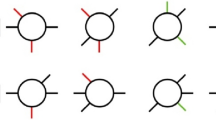Summary
Meinecke (1989, Exp. 1, cond. HO) showed that the detectability of a visual target embedded in a linear noise array decreases with increasing retinal eccentricity, while the reaction time (RT) of the hits increases. One of the most interesting features of her results was that the RT of the correct rejections is consistently larger than the RT for signals presented near the fovea. This finding suggests that initially visual attention is concentrated near the fixation point and then diffuses across the stimulus array to perform a serial, exhaustive search. We present a diffusion model of early visual-search processes that quantitatively describes this evolution of attention in time and space; in contrast to most previous conceptions, it is based on a genuine relation between the spatial and temporal dimensions of the search processes performed. The model predicts quantitatively both detection performance and RT. We conducted an experiment similar to that of Meinecke (1989), but with an additional variation of the presentation time. All the main features of the 189 predictions could be explained by the model. The interpretation of the four model's parameters is discussed in some detail and compared with previous estimates of the microscopic search speed derived from alternative models. Finally, we consider some possible modifications related to results of Kehrer (1987, 1989), and some generalizations to multi target detection and two-dimensional stimulus arrays.
Similar content being viewed by others
References
Bergen, J. R., & Julesz, B. (1983). Parallel versus serial processing in rapid pattern discrimination, Nature, 303, 696–698.
Bouman, M. A. (1969). My image of the retina, Quarterly Reviews of Biophysics, 2, 26–64.
Bundesen, C. (1987). Race models for selection from multielement displays, Psychological Research, 49, 113–121.
Bundesen, C. (1990). A theory of visual attention, Psychological Review, 97, 523–547.
Darling, D. A., & Siegert, A. J. F. (1953). The first passage problem for a continuous Markov process. Annals of Mathematical Statistics, 24, 624–639.
Eriksen, C. W., & Murphy, T. D. (1987). Movement of attentional focus across the visual field: A critical look at the evidence. Perception & Psychophysics, 42, 299–305.
Feller, W. (1971). An introduction to probability theory and its applications. Vol. I (3rd ed.). New York: Wiley.
Goel, N. S., & Richter-Dyn, N. (1974). Stochastic models in biology, New York: Academic Press.
Kehrer, L. (1987). Perceptual segregation and retinal position. Spatial Vision, 2, 247–261.
Kehrer, L. (1989). Central performance drop on perceptual segregation tasks. Spatial Vision, 4, 45–62.
Koenderink, J. J., & van Doorn, A. J. (1978). Visual detection of contrast: Influence of location in the visual field, target extent, and illumination level. Biological Cybernetics, 30, 157–167.
Lie, I. (1980). Visual detection and resolution as a function of retinal locus. Vision Research, 20, 967–974.
Meinecke, C. (1987). Analyseeinheiten und retinaler Ort. Untersuchungen zu Determinanten von Entdeckungsleistungen. Dissertation an der Universität Bielefeld, Bielefeld.
Meinecke, C. (1989). Retinal eccentricity and the detection of targets, Psychological Research, 51, 107–116.
Pirenne, M. H. (1943). Binocular and uniocular thresholds for vision, Nature, 152, 698–699.
Prinz, W. (1986). Continuous selection. Psychological Research, 48, 231–238.
Rijdijk, J. P., Kroon, J. N., & van der Wildt, G. J. (1980). Contrast sensitivity as a function of position on the retina, Vision Research, 20, 235–241.
Saslow, M. G. (1967). Latency for saccadic eye movement. Journal of the Optical Society of America, 57, 1030–1036.
Schwarz, W. (1989). The generalized Bouman-van der Velden quantum coincidence detector. Biological Cybernetics, 61, 315–318.
Schwarz, W. (1992 a). The Wiener process between a reflecting and an absorbing barrier, Journal of Applied Probability, 29, 597–604.
Schwarz, W. (1992 b). Do two eyes really see more than one? Journal of Mathematical Psychology, 36, 269–277.
Smoluchowski, M. v., (1915). Über Brownsche Molekularbewegung unter Einwirkung äußerer Kräfte und deren Zusammenhang mit der verallgemeinerten Diffusionsgleichung. Annalen der Physik, 48, 1103–1112.
Sperling, G., Budiansky, J., Spivak, J. G., & Johnson, M. C. (1971). Extremely rapid visual search: The maximum rate of scanning letters for the presence of a numeral. Science, 174, 307–311.
Treisman, A., & Gormican, S. (1988). Feature analysis in early vision: Evidence from search asymmetries. Psychological Review, 95, 15–48.
Treisman, A., & Souther, J. (1985). Search asymmetry: A diagnostic for preattentive processing of separable features. Journal of Experimental Psychology: General, 114, 285–310.
Author information
Authors and Affiliations
Rights and permissions
About this article
Cite this article
Schwarz, W. A diffusion model of early visual search: Theoretical analysis and experimental results. Psychol. Res 55, 200–207 (1993). https://doi.org/10.1007/BF00419607
Received:
Accepted:
Issue Date:
DOI: https://doi.org/10.1007/BF00419607




